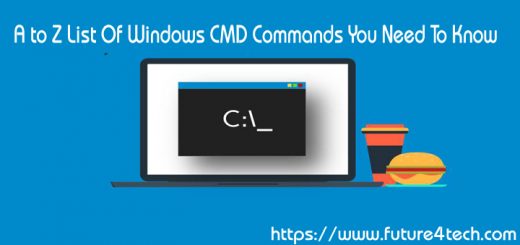REGSVR32 – Windows CMD Command
Register or unregister OLE controls, such as DLLs and ActiveX controls in the Windows Registry.
Syntax
REGSVR32 [/U] [/S] [/N] [/e] /I:[CmdLine] DLLName
Key
CmdLine An optional command line for DllInstall
default With no other options: Register server by calling DLLRegisterServer.
/i: Call DllInstall(TRUE,[cmdline]) to install the DLL.
if the install was successful also call DLLRegisterServer.
/n /i: Call DllInstall to install the DLL, but do not call DllRegisterServer.
/U Unregister Server by calling DLLUnRegisterServer.
/U /i: Call DllInstall(FALSE,[cmdline]) to uninstall the DLL.
if the uninstall was successful also call DLLUnRegisterServer.
/U /n /i: Call DllInstall(FALSE,[cmdline]) to uninstall the DLL.
but do not call DllUnRegisterServer.
/s Silent, do not display any dialogue boxes.
/e Silent, do not display a success message for DllRegisterServer (undocumented).
DLLName The path (absolute or relative) to the DLL to call the entry point on.
This DLL is required to export the entry points that will be called depending
on the selected option: DLLRegisterServer, DLLUnRegisterServer or DLLInstall.Regsvr32 requires Elevation.
ActiveX controls are now deprecated and will only run in Internet Explorer.
DllInstall is used only for application installation and setup. It should not be called by an application.
DllRegisterServer Instructs an in-process server to create its registry entries for all classes supported in the module.
DllUnregisterServer Instructs an in-process server to remove only those entries created through DllRegisterServer.
If you run REGSVR32 dllname.dll when the file is already registered, this will display a Pop Up message: “The module ModuleName was loaded but the Entry-point DllRegisterServer was not found.”
On a 64-bit version of Windows operating system, there are two versions of the Regsvr32.exe file:
The 64-bit version is %systemroot%\System32\regsvr32.exe
The 32-bit version is %systemroot%\SysWoW64\regsvr32.exe
To use the 32-bit version of Regsvr32 to register a 32-bit DLL on a 64-bit version of Windows, Open an elevated prompt and run a command like:
%systemroot%\SysWoW64\regsvr32 full_path_of_the_DLL
Examples
Unregister (Disable) CAB file viewer:
REGSVR32 /u C:\Windows\System32\cabview.dll
Register (enable) CAB file viewer:
REGSVR32 cabview.dll
Register DAO 3.6 (Data Access Objects):
REGSVR32 "C:\Program Files\Common Files\Microsoft Shared\DAO\DAO360.DLL"

Thanks , I’ve just been searching for info about this topic for ages and yours is the greatest I have discovered till now. But, what about the conclusion? Are you sure about the source?
Thanks for the points you have discussed here. Another thing I would like to talk about is that computer memory requirements generally rise along with other developments in the technologies. For instance, as soon as new generations of cpus are introduced to the market, there is certainly usually an equivalent increase in the scale demands of all pc memory plus hard drive space. This is because the application operated simply by these cpus will inevitably boost in power to make new know-how.
Great wordpress blog here.. It’s hard to find quality writing like yours these days. I really appreciate people like you! take care